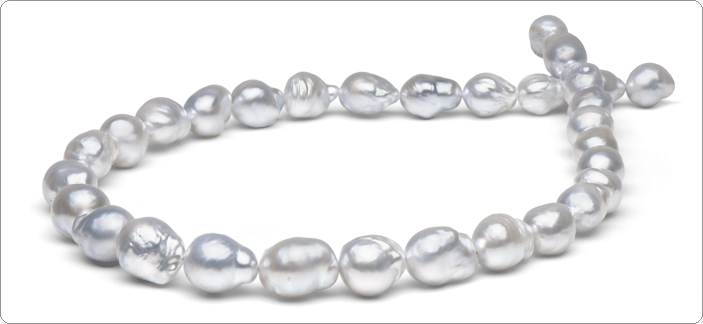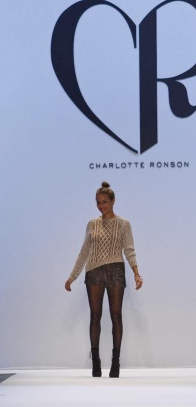
As a metaphor for love, pearl trumps diamond, easily. Why? A diamond is hard and unchanging. All about the sharp edges. Can the same be said of love—much less of a woman?
The major covet this Valentine’s Day: the “Freshadama”, the world’s highest-quality freshwater pearls, available only at pearlparadise.com, the world’s largest online pearl company.
Pearl Paradise could also be considered an opalescent, occasionally baroque form of purgatorial punishment. So many strands, so little time. And only one neck. This seems cruel.
Freshadamas™ are sold loose and undrilled. As truly round freshwater pearls, they are technically distinguished by their fine luster, rare opalescent flashes known as “orient”, and the fact that they deviate by 5% or less from being perfectly spherical, with virtually no blemishing or spotting.
Los Angeles-based Jeremy Shepherd is the CEO of Pearl Paradise. A business degree, a passion for travel, fluency in Spanish and Japanese, and a gig as a language-qualified flight attendant for now-defunct Northwest Airlines led to his founding of the company in late 1996-early 1997. Today, Pearl Paradise flash-sales and unmatched inventory fan a growing pearl-fever among fashionistas.
Yet, Shepherd says, the pearl continues to be misunderstood. A pearl is not formed by a grain of sand: “That’s simply impossible,” he explains. “A pearl may grow in response to trauma to the shell, so that is where this misunderstanding comes from. The oyster secretes the nacre to repair the damage, but the process is more sophisticated, whether in the wild or in a cultured state, than even most jewelers realize.”
But the allure of the pearl is not strictly science—it’s sensual. Pearls thrive on human contact. Although pearls may, of course, be set in precious metal like other gems, this seems criminal. Their evolution, which begins aquatically, continues when the pearl touches human skin. It is not an old wives’ tale that pearls improve with wearing. In this sense, they are far more responsive than, say, a diamond (Elizabeth Taylor famously scrubbed hers with alcohol—of all kinds—to keep its fiery facets pristine). Over time, pearls do subtly change color and luster as the result of being worn. They take on the aura of the wearer. This gently acquired patina, which makes them seem even more supple and radiant, is considered a plus among true pearl-fanciers.
“Pearls like the skin,” agrees Shepherd. “They are organic, and they like to be worn. They thrive on moisture from the air and moisture from the skin, although they do need to be treated with care before and after wearing.” One of the worst things you can do: seal up pearls in an airtight container, such as a plastic bag. Eventually, this isolation may result in dehydration, depleting, starving, dulling, even cracking the pearl. One might therefore say that it is possible for pearls to die of loneliness. Without the warmth and give of human skin, pearls get brittle. Who doesn’t?
Still, their relationships with human beings pose other perils. They are, like living creatures, somewhat volatile and reactive. Shepherd advises, “Last on, first off”, meaning that one must never spray perfume, aerosol deodorant, hair spray or apply other skin products or cosmetics while wearing pearls: micro-particulates in these products will attack their luster.
Ditto for room-freshener, Febreze, oven-cleaner. Wrap pearls in a clean towel or piece of laundered flannel, and stash momentarily inside purse, cabinet or drawer when unleashing a major cleaning frenzy—especially if you are wont to vacuum, as I am, a-la June Cleaver in a crisply ironed shirtwaist, heels, and strand of graduated saltwater akoyas.
Pearls should be wiped down with a clean, soft cotton cloth after wearing. And, eventually, pearls will need to be restrung. “The silk string gets oily,” explains Shepherd. “Shed cells from the wearer’s skin, sebum, pollutants from the air and so on eventually work their way into the drilled hole of the pearl, so the strand starts to look and feel dirty.”
And for those of us who have been known to occasionally sashay through a smoke-filled nightclub—maintenance is key.
The top of the line in terms of akoya pearls in this collection: the Hanadama, which radiate natural whiteness—the traditional pearl at its most classic. Still, some of us prefer something a bit funkier, meaning not round, and not necessarily white. This February 14, a strand of South Sea freeforms, please—and you can keep your plush red-velour teddy bear and the drugstore chocolates while you’re at it, buster.
Like Haute Living Los Angeles? Join our Facebook page or follow us on Twitter @HauteLivingLA. Want Haute Living Los Angeles delivered to your inbox once a week? Sign up for our newsletter.




















